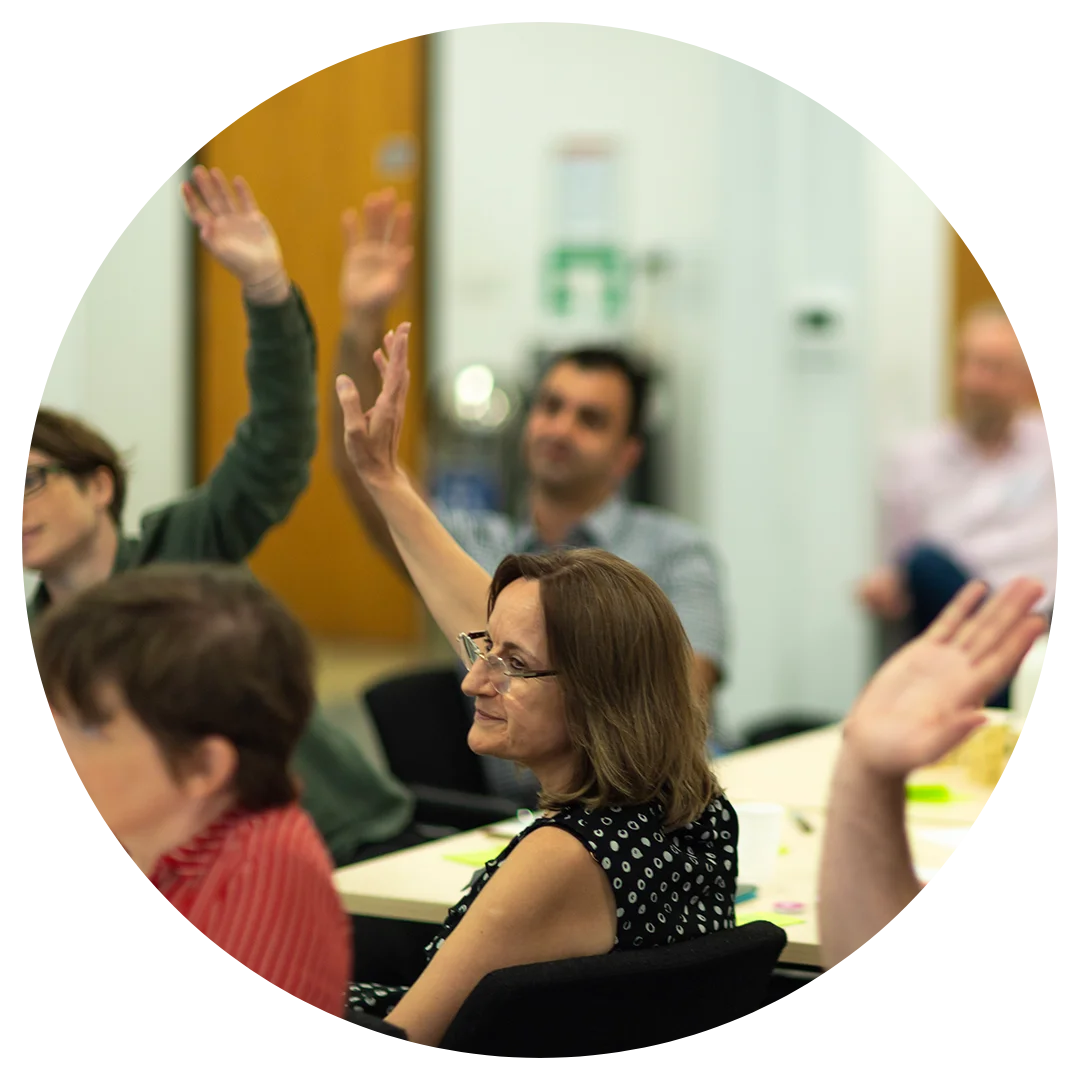Exploring new service models in adult social care
LOTI is hosting an innovation day at London City Hall to explore the potential for radical new service models to help in the field of Adult Social Care (ASC).
In this article, I’d like to share what we mean by “new service models” and explain why we think this approach is so important.
The state of ASC
No one who reads the news headlines can fail to have noticed that Adult Social Care is under enormous pressure right now.
Budgets are tightening. Demand is growing. Social care professionals and the people they serve alike report that the quality of outcomes is often not where they would like them to be. Countless reports and articles outline the scale of the challenges we collectively face.

Against this backdrop, three things seem evident.
- Solving these problems will require more than just improving the digital tools used by social care professionals.
- Incrementalism is not enough – we can’t just optimse the current model. We need to radically rethink the way ASC needs are met: helping prevent needs from arising in the first place and finding more effective ways to support people when they do need help.
- Local government alone cannot adapt its services fast and dramatically enough to meet these needs. New models – and potentially entirely new institutions – need to be developed in collaboration with the NHS, third and private sectors.
It’s not just the tech
For those of us tasked with helping colleagues to make the most of digital innovation, point 1 above really needs emphasising. Technology, data and their associated digital tools and methods are extremely powerful and are likely to play a key part in most solutions.
But they are almost never enough alone.
Technology cannot make up for a lack of more fundamental things. Indeed, I’d argue that in any given area of public sector activity, if we don’t have the right people with the right relationships, if our colleagues lack the right skills and competencies, if we don’t have the right assets and resources, if we lack the right ways of working, no amount of technology and data will make much difference.
Conversely, if we can get the foundations right, technology and data can unlock incredible new possibilities. We represent this idea in LOTI’s hierarchy of public sector innovation below.

Our collective task is to match the level of innovation we’ve seen in technology in the last 20 years with equal innovation in the structures, processes and models to which those technologies are applied.
What do we mean by “new service models”?
So when LOTI talks about the need for “new service models”, what we mean is that we need to address the whole pyramid.
In areas as challenging as ASC, public sector organisations need to have every tool and method at their disposal to deliver the outcomes they want to achieve. Yet often they are using a limited toolkit – mostly comprising the 18 factors in the table below.

To spell this out, public sector organisations typically work to optimise their existing services by:
- Dialling up or down the level of time, money, staff and assets that are applied to addressing a particular need.
- Putting in place different structures; subdividing or combining teams or functions.
- Refining or adopting new processes.
- Changing the timing of their interventions – most likely intervening earlier in an issue, when it’s smaller, simpler and cheaper to resolve.
- Changing the locations they serve or from which they deliver services.
- Creating incentives to influence demand.
- Changing (within legal limits) who is eligible for certain services.
- Altering the scope of service – perhaps focusing on a core offer while reducing the provision of non-essential elements.
- Prioritising resources, time and attention based on cases of highest risk, need or importance.
- Raising or consciously reducing awareness about a service.
- Training staff in new skills to make them more effective, productive and adaptable.
- Adapting the business model of the service
- Using technology and data to enhance their work in a wide variety of ways.
To be sure, it’s a decent list that’s proven amazingly durable. But given the scale of today’s challenges, it may not be enough.
Inspiration for how things can be done differently
To explain this point, we can look to a range of inspiring organisations that are tackling social issues in ways that look quite different from traditional public services. For example:
Buurtzorg places community nurses in self-managing teams of 12. They look after their own patch, making all the decisions as a team. If they need to spend half a day with just one person to get to the root of their needs and find other local sources of support, they can do so. Patient satisfaction rates are among the highest of any healthcare organisation, impressive financial savings have been made and employee satisfaction is incredibly high.
The Tribe Project works with national and local partners to intelligently map, develop and connect people, places and things online. They help individuals, carers, voluntary and community groups, public services and private enterprises find and offer the time, energy, skills and knowledge that will make a difference to people and to communities.
GoodSam enables ambulance trusts to send out an alert via an app to qualified first aiders in the vicinity of someone experiencing cardiac arrest, highlighting their location and that of the nearest defibrillator so they can provide vital support before the ambulance arrives. These off-duty nurses, paramedics, doctors, police, fire and first aiders save many lives each year. (Key point: this is not an app that digitises calling 999. It augments the capacity of a public service by intelligently tapping into a volunteer network.)
Equal Care Coop helps connect those in need of care with local carers, putting choice in the hands of those seeking care. They use a cooperative business model that ensures workers get a decent wage without the people getting support paying more.
Beam crowdfunds support for people at risk of homelessness, giving them bespoke assistance to access careers, homes and true independence. They don’t just help them manage an immediate crisis but equip them with everything they need to truly thrive.
Transport for London made an interesting decision a decade ago. Rather than create their own travel apps for Londoners, they instead published real-time, machine-readable data on all their modes of transport, which external developers have used to create more than 600 apps that help Londoners navigate the city. TfL thereby stimulated the creation of useful digital products without building or commissioning them themselves.
The Asphalt Art initiative by Bloomberg Philanthropes tackles traffic accidents at major urban junctions, not by increasing signage and barriers, but instead by getting communities out to paint giant murals on the road. The unusual visual environment this creates encourages all road users to pay more addition. The result in some cities has been a 50% decrease in the rate of crashes involving pedestrians or other vulnerable road users.
I could cite many more examples.
What’s interesting about them is that they’re addressing social challenges by using an additional set of factors – shown below in pink. Yes, nearly all of them are enabled by smart use of technology. But it’s their novel service model that makes them distinctive and effective.

Consider, for example, how:
- Beam and The Tribe Project change who can be involved – massively increasing the available capacity to solve a problem.
- Buurtzorg changes the model of delivery: replacing a traditional, top-down public service with a decentralised collection of self-organising teams. This avoids large management structures and provides more localised solutions.
- Equal Care Coop uses a cooperative organisation type, giving staff a real stake in their organisation and making higher wages possible.
- Beam uses crowdfunding as one of their funding methods to increase the money available and enable donors to see their impact.
- Nearly all these models give more power to staff and those being cared for to have more agency, enabling people to manage their own well-being and frontline staff to practise their vocation.
- The Asphalt Art initiative takes a totally unexpected approach by harnessing art to solve the problem, rather than creating restrictions.
Time to try some different hats
Final key point: if we want to see more new service models like those above, those of us working in the public sector may well need to rethink our role, shifting from delivering or commissioning services, to exploring some of the options outlined in yellow.

For example, the public sector can help develop new service models by acting as:
- Investor – providing money to support external organisations to develop new solutions to local needs;
- Incubator – bringing social enterprises under their wing to support them in developing solutions and providing ready access to funding, expertise and mentorship
- Convenor – bringing different actors together to collectively address an issue;
- Matchmaker – connecting people in a community with certain needs with individuals or organisations who can address them;
- Incentiviser – for example the GLA’s use of challenge prizes to incentivise external innovators to help them find novel solutions to local issues;
- Placemaker – taking responsibility for the outcomes they want to see in their communities and building their resilience.
- Data provider – publishing and providing rich context around the data they collect to enable the creation of a broader range of services created by others.
Summary
The day-to-day operational pressures of running Adult Social Care services, and impending changes like the Care Cap, are rightly top of mind for people working in the sector. There are huge challenges to navigate in the weeks and months ahead.
But we also need to carve out a safe and supportive space for those who want to think creatively about how we build sustainable models that can work over the longer term, using all the tools and methods that are available in the internet era. That is the purpose of LOTI’s New Service Models in Adult Social Care Innovation Day and the innovation fund that follows from it.
LOTI was founded on the principle that collaboration is vital for addressing London’s greatest challenges. Nowhere is that more true than in Adult Social Care. We invite you to join us on this journey. For more information visit our project page.
Eddie Copeland



